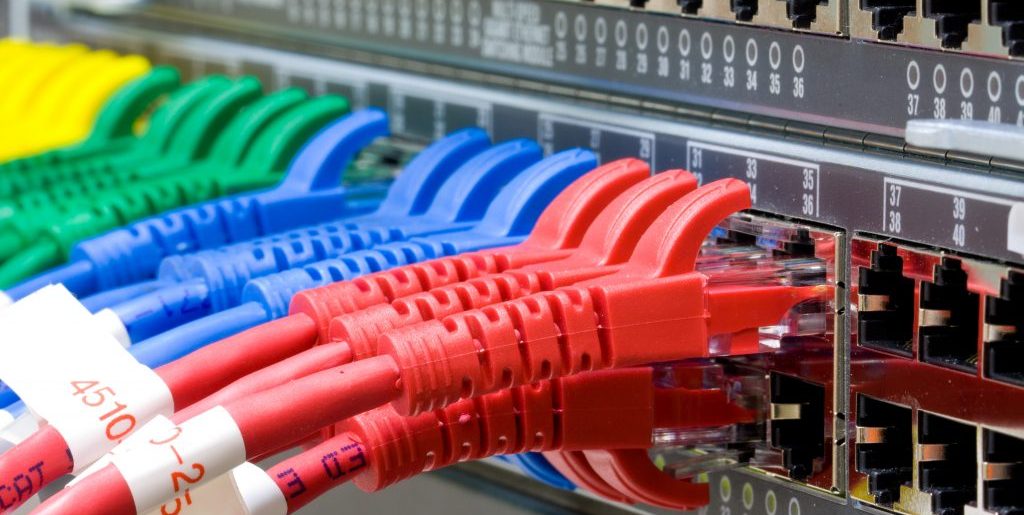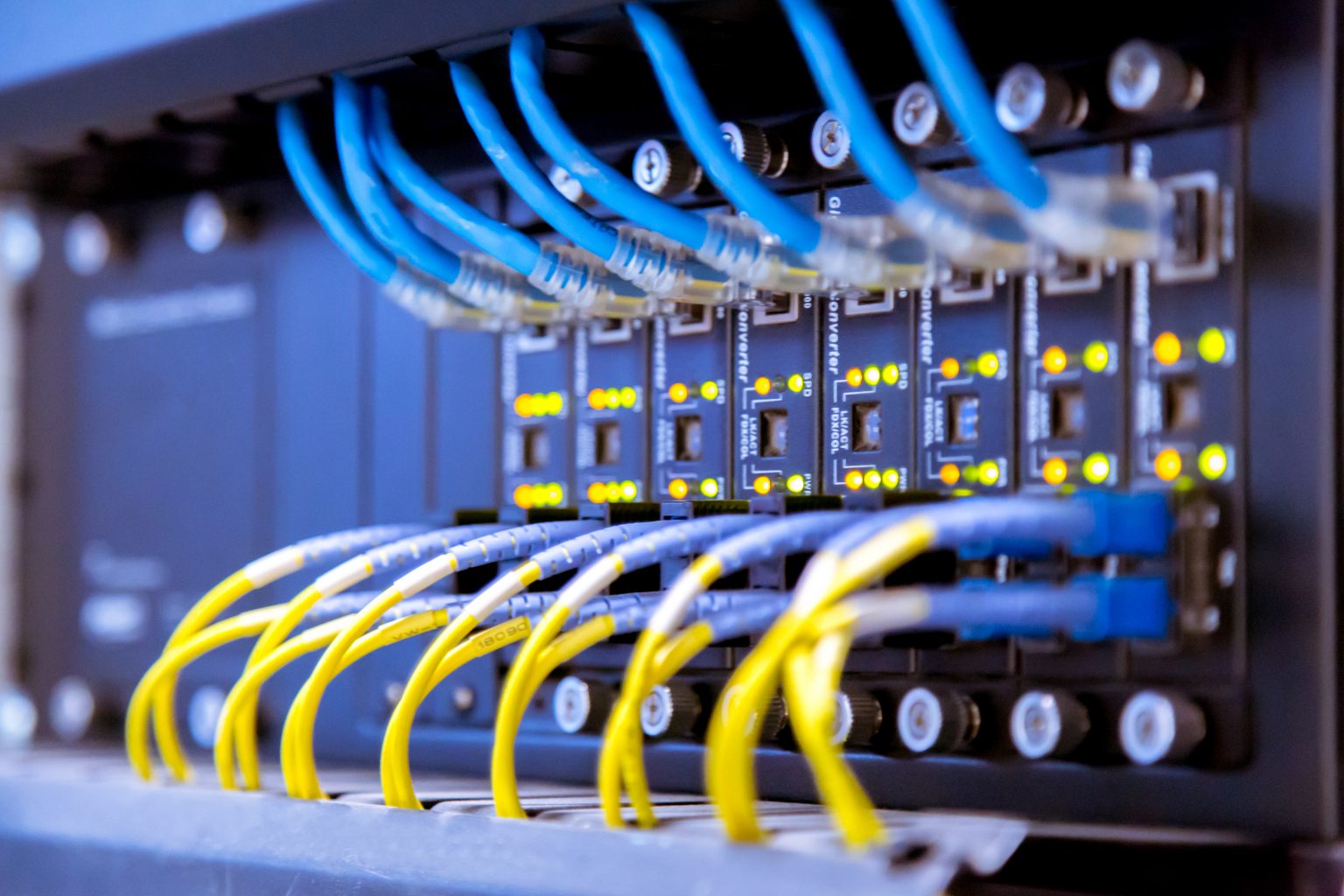
The time has come. You are expanding or even just renovating. All the plans are laid out in front of you. As you glance over the plans one last time, a question pops into your head. What should I use for network cabling and better yet where should they be run to and from?
Network cabling or low voltage wiring is the backbone of networking infrastructure. There are different standards along with cabling types. How will you make sure the investment you make today will meet your future needs?
Category 5e or Cat5e was the mainstay in networking for many years. In fact, you will still find it being installed. Category 5e cable has a maximum data transfer speed of 1,000 Megabits per second or 1 Gbps, a maximum bandwidth of 100 MHz and a maximum length of 328 Feet or 100 meters. Category 5e, if existing, can be a viable option for networks consisting of less than 10 users or situations where network traffic is expected to be very minimal. Cat5e is not a cost effective option with the small difference in price compared to faster options.
Category 6 or Cat6, with a maximum bandwidth of 250 MHz, can transfer data at 10,000 Mbps or 10 Gbps. It can transfer gigabit speeds up to 328 feet and 10 Gigabit speeds up to a distance of 37-55 meters depending on cable and environmental variables. Category 6 is an incremental increase between Category 5e and 6a. Again, if this cable is existing, it is a better option than Cat5e as it allows for a network consisting of 20 users. With the increased bandwidth and small price difference between Category 6 and 6a, purchasing 6 for installation is not a cost effective option.
Category 6a or Cat6a with a maximum bandwidth of 500 MHz can transfer data at 10,000 Mbps or 10 Gbps. It can transfer both Gigabit and 10 Gigabit a distance of 328 feet. Finally a cable category that I can start to recommend, Category 6a supports 10 Gigabit speeds, its entire length adding flexibility to installations and allowing your cabling to allow your network to grow as 10 Gigabit ethernet network devices become more available. Cat6e supports networks of 50 users with moderate network traffic and 25 with heavy network traffic.
Category 7 or Cat7 with a maximum bandwidth of 600 MHz can transfer data at 10,000 Mbps or 10 Gbps. It can transfer 10 Gigabit a distance of 328 feet. Being another incremental increase in speed it would be best to set up a Cat7a with its similar price point.
Category 7a or Cat7a with a maximum bandwidth of 1000 MHz can transfer data at 10,000 Mbps+ or 10 Gbps+. It can transfer 10 Gigabit+ a distance of 328 feet. A great option for the price. Category 7 has a larger bandwidth than Category 6a and 7 which allows for more data to travel through the cable, making Cat7a great for small to medium sized companies. Category 7a will easily support networks with 80 plus users and 60 plus users with heavy network traffic.
Category 8 or Cat8 with a maximum bandwidth of 2000 MHz can transfer data at 40,000 Mbps or 40 Gbps. It can transfer 40 Gigabit a distance of 108 feet and 10 gigabit 328 feet. Category 8, as of the date of this post, is a new cable standard. Category 8 will support 100 network users with average network traffic and 80 users with heavy network traffic. Depending on your budget and interest in the future, proofing your network with a Category 8 can be a great option.
Fiber Optic cables with bandwidths exceeding 10,000 MHz data can transfer rates of 100 GBps + and single runs cross major oceans. Fiber is a great option for large networks with long runs between offices. Typically fiber is run between switches that will set the fiber cabling down to a ethernet cable. If your network is expected to grow by a large amount or to have over 120 users, fiber is an excellent choice. It is also great if you are planing to connect multiple buildings to the same network. Due to the high cost of the cabling equipment and termination of cables, fiber might not be the best option for some installations.
Choosing the proper cable can make all the difference between a network installation that lasts for years to come or one that will need to be upgraded.
Taking into account the style and building materials can also change your selection. Will there be cubicles? A drop ceiling? Or will the cables be behind a sheet of drywall, unable to be easily accessed?
The maximum number of projected users and devices along with maximum distance of the furthest cable run is a great starting point when selecting cabling. For most installations, Category 7a is a great option for both speed and price as most networking equipment being sold is 1 Gigabit. The next best option would be Category 6a if the installation doesn’t require runs with a distance of more than 37 meters. Regardless of cable category, a cable with the proper in wall certification must be chosen to meet building codes. Cables comes in two classifications: Plenum and Riser. Plenum cables are designed for installation in the ceiling or generally in areas that do not cross building levels. Riser cables are used for floor to floor runs, typically in walls. Riser cables offer no fire retardant protection as opposed to Plenum cables which have a cable jacketing of either a low smoke PVC or FEP. Plenum cables can be used in place of riser cables but not vice versa.
With the wire selected, next comes the location of the wall outlets. A great rule of thumb is to install an ethernet jack on the opposite side of the stud of an electrical outlet. Using the stud will help reduce interference caused by the electrical outlet. The next step is to determine where all of the cabling will terminate. A data closet or server room is best. Just keep in mind that this location should be easily accessible, secure, and dry. Cables that are run in walls have a solid copper core and, because of this, cables should terminate to a patch panel or wall jack and connect to a device through a patch cable as they are designed to flex.
When choosing a contractor for installation of cabling, ask about cable certification. A certified cable run will be tested to ensure that it will meet the full specs the cable was intended for. Often a poorly terminated connection or a twist of kink in a wire lowers the cable’s performance. It is best to catch issues during installation instead of years down the road when the cable needs to be removed and replaced.
Taking the time to properly design, select and test the network cabling used will pay dividends by saving lost time in productivity and construction costs for replacement wires.

Looking for more information? Check out what Wikipedia has to say here.
